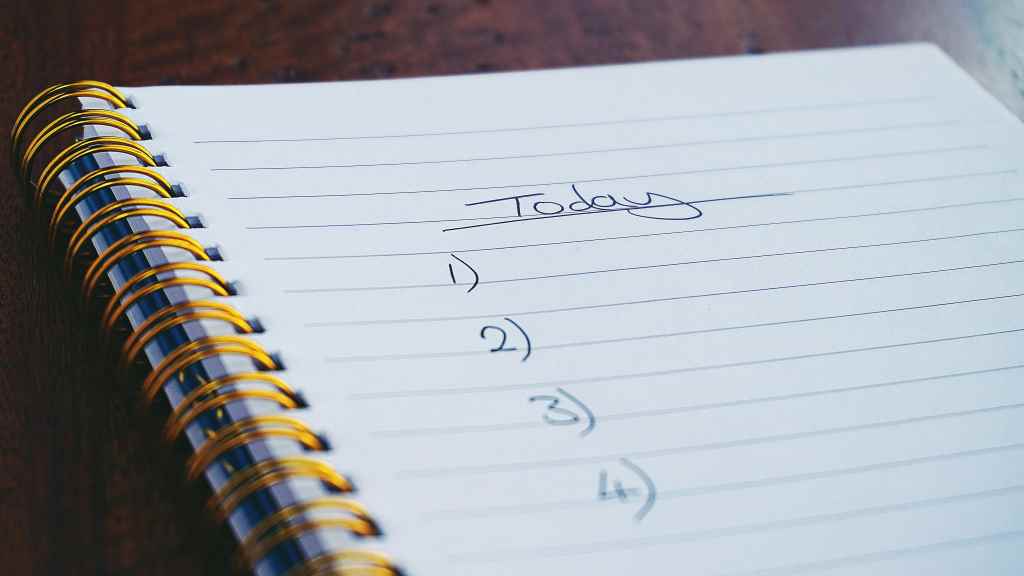A Productive 7-Day Exercise Plan
Discovering a well-rounded and sustainable workout schedule is essential to experiencing the full positive effects of physical activity. These include improving your emotional state, reducing the chances of developing heart disease, and promoting better sleep. The key to a successful workout plan is to challenge the body and stimulate the mind by incorporating various exercises such as cardio, full-body workouts, stretching, and weightlifting.
According to the Centers for Disease Control and Prevention (CDC), individuals should engage in at least 150 minutes of moderate-intensity physical activity every week, equivalent to 30 minutes daily for five days. The CDC also suggests including two days of muscle-strengthening activities.
Your specific objectives will determine your exercise plan, such as increasing muscle mass and improving physical strength. To assist you in defining your goals and initiating your workout journey, here is a suggested weekly exercise schedule designed by Jacklyn Romano, a certified physical therapist from New Jersey, and Sharon Gam, a certified personal trainer and health coach with a PhD.
A woman’s exercise routine is depicted in the image by Ivan Gener from Stocksy.
Is the ’12-3-30′ workout on the treadmill considered an effective exercise?
Exercise Plan
The seven-day workout plan developed by Romano and Gam aims to assist individuals in establishing a consistent exercise regimen. Each day of the schedule includes the following:
-
- Monday: Cardio workout
- Tuesday: Lower body exercises
- Wednesday: Upper body and core workout
- Thursday: Active rest and recovery day
- Friday: Lower body workout with emphasis on glutes
- Saturday: Upper body exercises
- Sunday: Day off for rest and recovery
Preparing and Recovering
To avoid injuries, it is recommended to spend 5 to 10 minutes warming up before every workout. A good warm-up routine can involve dynamic stretches like butt kicks and high knees, which help increase blood flow to the muscles and loosen the joints. Cooling down after a workout by stretching the muscles or taking a leisurely walk is equally important, as it helps bring the heart rate back to its average level safely.
Upper and Lower Splits
This sample workout plan consists of four weekly muscle-strengthening sessions, two dedicated to the upper body and two to the lower body. It is recommended that you maintain the same set of exercises for each session, gradually increasing the weight and number of repetitions as you improve your strength.
The Concept of Progressive Overload
According to Romano, progressive overload is a way to increase the intensity of your workout. This involves performing the same exercises but with heavier weights or more repetitions. To start, aim for three sets of 10 reps with a minute of rest between each set for each exercise.
According to Romano, the optimal number of repetitions for beginners is ten. Going over this number may compromise proper form, while going under may not allow for enough practice with the movement. If the exercise feels too easy, increase the weight to effectively challenge and engage the muscles.
The Significance of Incorporating Stretching into Your Routine
Many individuals neglect stretching. However, good flexibility is crucial to preserving joint mobility and avoiding potential injuries.
For each of the stretches below, repeat the following sequence for 30 seconds and then switch to the other side:
-
- Calf stretch: Lean against a wall and raise your right foot so that your toes touch the wall. Gradually move closer to the wall until you feel a stretch.
- Hamstring stretch: Lie on the floor next to a wall. Lift your right leg and place your heel against the wall. Slowly straighten your leg until you feel a stretch.
- Hip flexor stretch: Use a towel to support your left knee as you kneel on the floor. Bring your right foot forward, bending your right knee. Shift your hips forward to feel a stretch and shift your weight onto your right leg.
- Shoulder stretch: Hold your right arm across your chest using your left arm.
- Quad stretch: Hold on to a wall or the back of a chair for support. Grasp your right ankle and pull your heel toward your buttocks. Keep your knees close together.
Monday: Cardio Day
Strive to engage in a minimum of 30 minutes of aerobic exercise such as cycling, running, jogging, and walking. According to the CDC, it is recommended to maintain a moderate level of intensity, which equates to a heart rate between 64% and 76% of your maximum heart rate. You should be able to carry on a conversation during this activity level. On the other hand, vigorous intensity refers to an activity where you can only speak a few words without taking a break.
A commonly used method for determining your maximum heart rate is subtracting your age from 220. For instance, if you are 40 years old, your maximum heart rate would be 175 beats per minute (bpm). You should maintain a heart rate between 112 bpm and 133 bpm.
Endurance workouts, also known as steady-state cardio, can enhance the endurance of your heart and lungs and lower your chances of developing diabetes, heart disease, and stroke. This exercise helps your body become more proficient in delivering oxygen and nutrients to your muscles while also effectively removing waste. As you continue these workouts, you will notice an increase in ease, which may encourage you to gradually intensify the pace.
Tuesday: Lower Body Workout
During your first muscle-strengthening session of the week, you will focus on your lower body, specifically your hamstrings, glutes, and quads, by performing four compound lifts. Compound lifts utilize multiple muscle groups, such as a deadlift, which engages the lower body, arm, and core muscles.
Complete three sets of 10 repetitions for each of the following exercises, taking a one-minute break between each set:
-
- Deadlifts: To perform a deadlift, stand with your feet shoulder-width apart and push your buttocks back while slightly bending your knees. Maintain a straight back and hold onto a barbell or dumbbell with your hands. Lift the weights by thrusting your hips forward, keeping your back flat. Slowly lower the weights back to the ground.
- Hip thrusts: Begin by sitting on the ground with your shoulders resting on a bench or stable chair behind you. Keep your feet planted firmly on the ground, then lift your hips. Squeeze your glutes until your knees are at a 90-degree angle, then lower your hips back down.
- Lunges: Take a split stance with one foot a few feet before the other. Keep your upper body straight and bend your knees until your back knee is a few inches from the ground and your front thigh is parallel. Push through your heels to return to the starting position. Repeat on the other side.
- Squats: Assume a sitting position like a chair, with your feet shoulder-width apart and flat on the ground. Push back up to a standing position.
Before adding weights, you must ensure your form is perfected to prevent injuries. Gradually increase the weight until your last few repetitions result in your muscles burning and your heart pumping.
Wednesday: Upper Body and Core Workout
Today’s workout will give your legs a much-needed rest as the focus will be on your arms. These exercises will specifically target your biceps, triceps, and chest muscles to help them grow stronger. So, your legs can take a break and let your arms do the work.
-
- Hold a dumbbell in each hand or grip a barbell with both hands to perform a bicep curl. Let your elbows rest at your sides and extend your forearms parallel to the floor. Bend your elbows to raise the weight to your shoulders, then return to the starting position.
- For a chest press, lie on a bench with your feet flat on the floor and hold a dumbbell in each hand or a barbell in both hands. Keep your arms perpendicular to your body and face your palms forward. Push the weight by extending your elbows, then lower it back to the starting position.
- To do a tricep dip, sit on a chair or bench and grip the edge next to your hips. Slide your buttocks off the chair and lower yourself until your elbows are bent at a 45- or 90-degree angle. Push yourself back up to the starting position.
Complete three sets of 10 repetitions for each exercise, taking a one-minute break between each set. Conclude the workout with a brief core circuit. Select a few core exercises, such as crunches, planks, and Russian twists, and perform each for 30 seconds with a 10-15-second rest in between. Repeat the chosen core moves for 10-15 minutes.
Thursday: Rest and Recovery through Activity
Allow your body to rest and rejuvenate. Engaging in exercises that strengthen your muscles may result in tiny tears in your muscle fibers, leading to feelings of discomfort and tenderness. While this may seem concerning, it is a sign that your muscles will become even stronger. Failing to give your muscles time to recover can increase your chances of injury and hinder muscle growth.
On days when you feel sore or tired, you can still incorporate some type of physical activity. This can include low-intensity exercises like walking and stretching, which can help alleviate muscle tightness after a workout.
On Friday, the lower body muscles will be targeted, explicitly emphasizing the glutes.
During this session, the emphasis will be on targeting your glutes. Begin by warming up your glutes with three sets of five resistance band exercises, including bridges, clamshells, and squats.
Once your glutes are activated, you can use weights for your exercises. According to Romano, performing ten repetitions for three sets of hinge movements, such as deadlifts, hip thrusts, and single-legged hip thrusts, is recommended. These specific exercises focus on strengthening both your glutes and hamstrings.
Saturday: Upper Body Workout
For your last workout of the week, focus on your back and shoulders. Before moving on to weightlifting, it’s important to activate your muscles. Start with three sets of 10 repetitions of push-ups and pull-ups. If needed, you can make modifications such as incline push-ups or assisted pull-ups until your strength improves.
Next, you will perform ten repetitions and three sets of five weighted exercises. These exercises consist of:
-
- Single-arm row with dumbbell: Begin by placing one hand on a bench under your shoulder, keeping your arm straight. Rest your corresponding knee on the bench and extend your other leg to the side with your foot flat on the floor. Take hold of a dumbbell with your other hand and pull your elbow up to your side until it is parallel to the floor. Lower the dumbbell and repeat on the opposite side.
- Pull down for lat muscles: Grasp the bar of a cable machine with your palms facing away and your hands shoulder-width apart. Ensure that you are seated on a bench or kneeling on the floor. Pull the bar towards your chest, then slowly return to the starting position.
- Raise arms to the side: Stand or sit with a dumbbell in each hand, arms at your sides. Engage your core and slowly lift the weights to the side until your arms are parallel to the floor. Then, gradually lower back to the starting position.
- Reverse fly exercise: Stand with your feet shoulder-width apart and slightly bend at the waist. Hold a dumbbell in each hand and raise both arms to the side, squeezing your shoulder blades together. Return to the starting position.
- Shoulder press with dumbbells: You can perform either seated or standing. Hold a dumbbell in each hand at shoulder height with your palms facing away and your elbows bent at a 90-degree angle. Press the weights until your arms are straight and the weights touch overhead. Slowly lower back to the starting position.
Sunday is designated as a day for relaxation and healing.
Reward yourself for a week of hard work by allowing your body to rest and recuperate. Consider practicing yoga or doing stretches to avoid muscle stiffness and soreness.
It is perfectly acceptable to have a full day of rest as well. Both physically active and laid-back days off are essential in our weekly schedule, whether reading on the sofa or catching up on our favorite shows on Netflix. The most crucial aspect is to pay attention to what your body needs.
Suggestions
Maintaining a consistent workout routine can be challenging. To establish a regular habit of physical activity, consider these tips:
-
- Ask your friends to join: Create a plan to meet up with a friend and exercise together, which can help hold you accountable.
- Find enjoyment in exercise: The key to sticking to a workout routine is finding an activity you enjoy. This suggested weekly workout schedule can serve as a starting point for varying your workouts but include your preferred exercises.
- Schedule your exercise sessions: Set aside 30-45 minutes daily to ensure you have time to work out.
- Keep track of your progress: Start a fitness journal (https://www.health.com/fitness/fitness-journals) to record your biking, jogging, walking, or weightlifting progress. Seeing your improvements can serve as motivation to continue pushing forward.
- Try a new workout class: Consider signing up for a Pilates or Zumba class in your local area to try something new.
Remember to prioritize nutrition.
Having a consistent exercise schedule and a well-rounded dietary plan is crucial for maintaining good health. Consuming a diet that is high in essential nutrients can significantly decrease the chances of developing chronic diseases such as heart disease and type 2 diabetes. It would help if you consumed enough carbohydrates, healthy fats, and protein to keep yourself satiated and energized.
These are a few suggestions for maintaining a well-balanced diet:
-
- Opt for dairy products that are low in fat or nonfat.
- Incorporate a variety of fruits, vegetables, and whole grains into your diet.
- Stay hydrated by drinking plenty of water.
- Ensure you consume essential nutrients such as calcium, potassium, and vitamin D.
- Keep your added sugar, alcohol, salt, and saturated fat intake in check.
- Choose lean meats, poultry, and fish as your protein sources instead of red meat.
A Brief Overview
Engaging in routine physical exercise can enhance your emotional well-being, lower the chances of heart disease, and improve your sleep patterns. Follow this example workout plan to establish a regular exercise routine. Remember, your fitness regimen should align with your objectives. As you progress, modify this schedule to reach your goals effectively.







